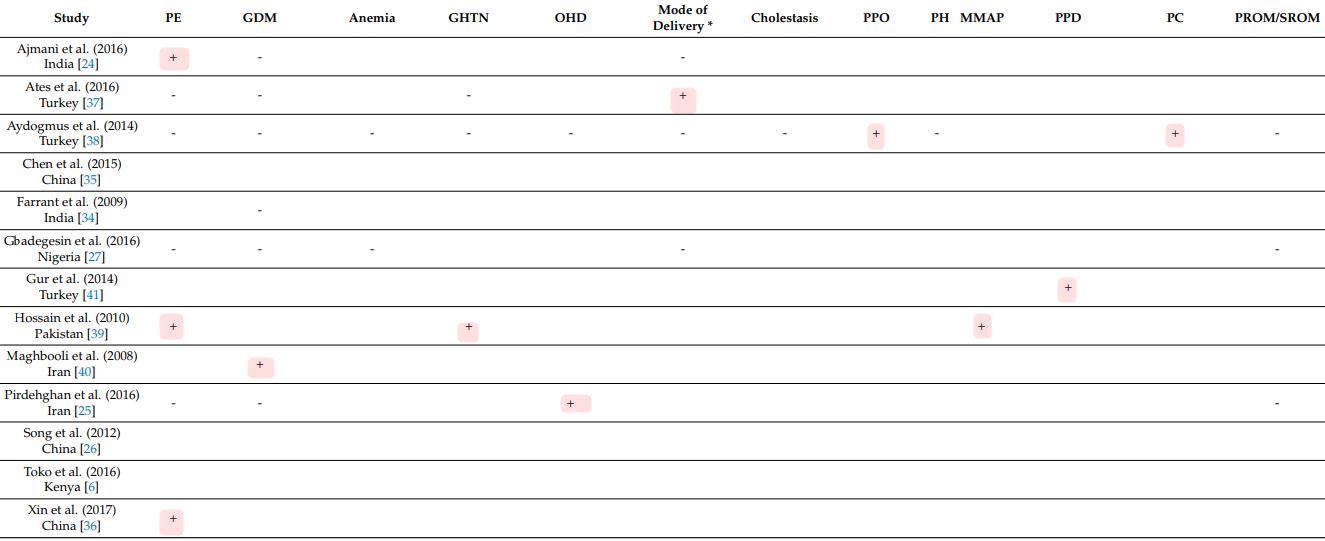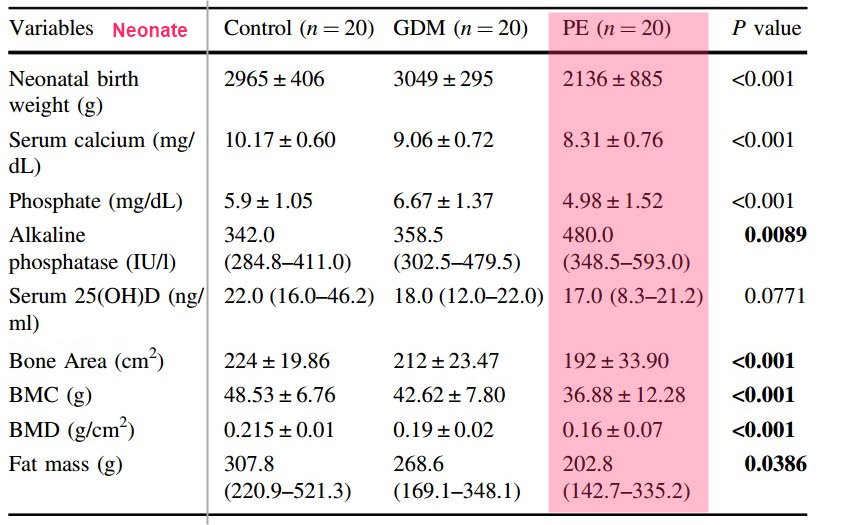Vitamin D needed by pregnant women and neonates (in developing countries now too - 2 tables)
Associations of Maternal Vitamin D Deficiency with Pregnancy and Neonatal Complications in Developing Countries: A Systematic Review
Nutrients 2018, 10(5), 640; https://doi.org/10.3390/nu10050640 (registering DOI)
Paige van der Pligt 1,* , Jane Willcox 2,3, Ewa A. Szymlek-Gay 1, Emily Murray 2, Anthony Worsley 1OrcID and Robin M. Daly 1
(This article belongs to the Special Issue Changing Times for Vitamin D and Health)
📄 Download the PDF from VitaminDWiki
Note that
✻: significant association between VDD and the outcome in question;
- : no significant association.
When neither + or - is given indicated that outcome was not assessed.
Maternal

| ** | ||
|---|---|---|
| PE | pre-eclampsia | |
| GDM | gestational diabetes mellitus | |
| GHTN | gestational hypertension | |
| OHD | oligohydramnios | |
| PROM | premature rupture of membrane | |
| SROM | spontaneous rupture of membranes | |
| IFD | Intrauterine Fetal Death (death of fetus after 20 weeks) | |
| NICU | neonatal intensive care unit | |
| HC | head circumference | |
| CM | congenital malformation | |
| SGA | small for gestational age | |
| PH | prolonged hospitalization | |
| Macro | macrosomia | |
| Post MB | post mature birth | |
| MMAP | mean maternal arterial pressure | |
| W zscore | wasting z score | ** |
Neonate

* PPO poor pregnancy outcomes (grouped by study researchers)
PPD postpartum depression
PC perinatal complications risk. Grouped outcomes:
Mode of Delivery (includes vaginal delivery and lower segment caesarean section),
Birth weight (includes low birth weight),
Congenital Malformation (includes Bony Abnormality),
Stunted Growth (includes Impaired Fetal Growth),
Still birth/IFD (includes mortality).
Pregnant women in Asia, the Middle East, Africa and Latin America are at risk of vitamin D deficiency (VDD) and prevalence throughout these regions are among the highest, globally. Maternal VDD has been associated with increased risk of a number of adverse maternal and neonatal health outcomes, yet research from developing countries is limited. We assessed the associations of maternal VDD during pregnancy with adverse health outcomes by synthesizing the literature from observational studies conducted in developing countries. Six electronic databases were searched for English-language studies published between 2000 and 2017.
Thirteen studies from seven countries were included in the review.
Prevalence of VDD ranged from 51.3% to 100%.
Six studies assessed both maternal and neonatal outcomes, four studies assessed only maternal outcomes and three studies assessed only neonatal outcomes.
Ten studies showed at least one significant association between VDD and adverse maternal and/or neonatal health outcomes including
pre-eclampsia (n = 3),
gestational diabetes mellitus (n = 1),
postpartum depression (n = 1),
emergency cesarean section delivery (n = 1),
low birth weight babies (n = 4),
small for gestational age (n = 2), stunting (n = 1).
However most of these studies (n = 6) also showed no association with multiple health outcomes.
Vitamin D assessment methods, criteria applied to define VDD, season and trimester in which studies were conducted varied considerably across studies. In conclusion, this study highlights the need to improve maternal vitamin D status in developing countries in an effort to support best maternal and child health outcomes across these regions. Future research should focus on more unified approaches to vitamin D assessment and preventative approaches that may be embedded into already existing antenatal care settings
